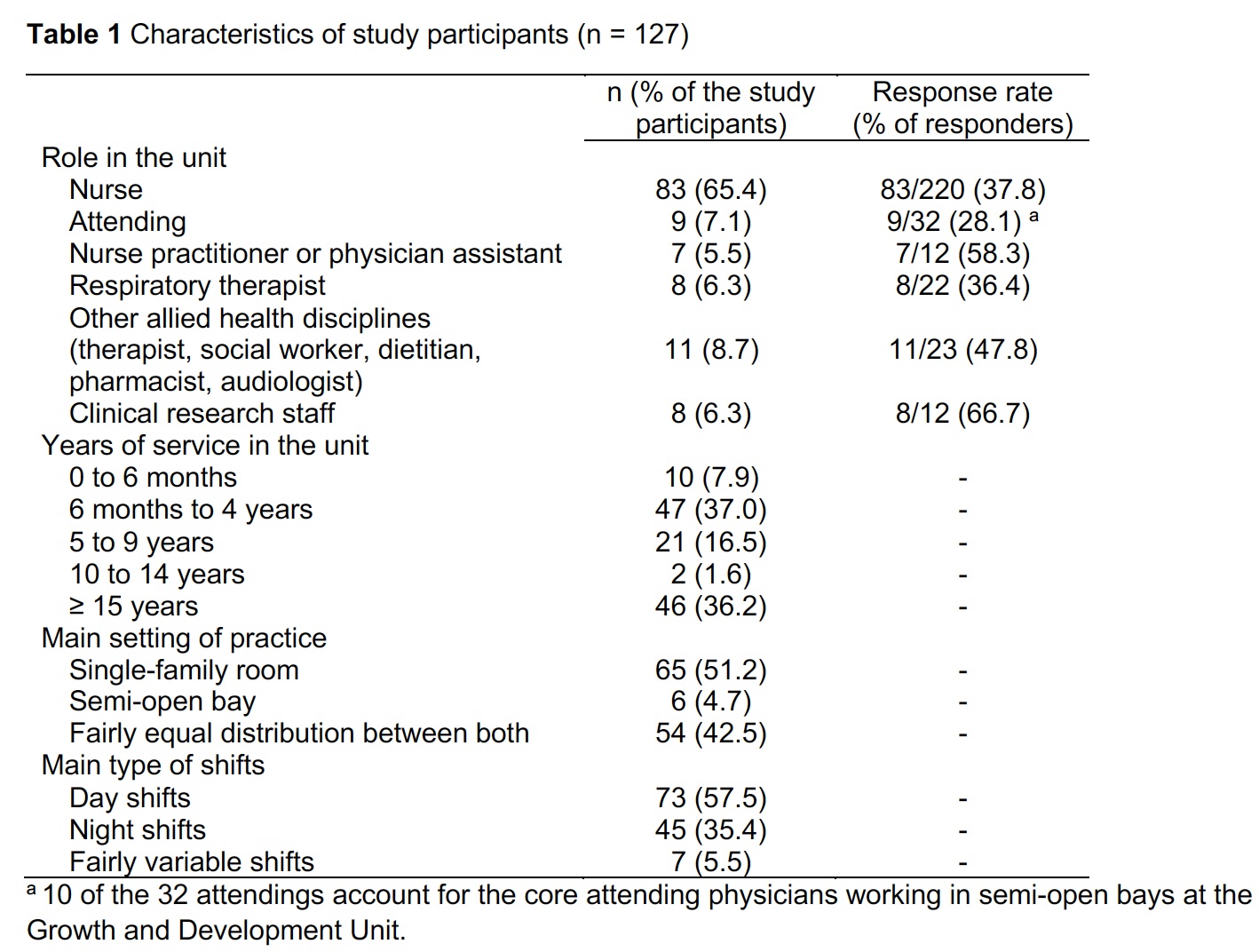Neonatology
Session: Neonatal General 1: NICU Care
61 - Perceptions of Interdisciplinary NICU Staff on the Physical Environment of a Hybrid Design Level-III NICU
Friday, May 3, 2024
5:15 PM - 7:15 PM ET
Poster Number: 61
Publication Number: 61.477
Publication Number: 61.477

Gabriel Cote-Corriveau, MD MSc
Pediatrician
CHU Sainte-Justine
Montreal, Quebec, Canada
Presenting Author(s)
Background: The neonatal intensive care unit (NICU) environment may play an important role in facilitating the sensory experiences of preterm and/or ill infants during a critical window for brain development. Feedback from NICU staff about the perceived effects of NICU design on newborns, families, and themselves may help optimize the NICU environment.
Objective: To assess the perceptions of NICU staff working within a hybrid design unit about the environment surrounding newborns, and the impacts of NICU design on patient and staff experience.
Design/Methods: This is a survey study within a hybrid design level-III NICU, where high-risk infants initiate their stay in single-family rooms (SFR) and typically transition to semi-open bays (SOB) when medically stable. We surveyed the interdisciplinary NICU staff, including attending physicians, nurses, nurse practitioners, physician assistants, respiratory therapists, allied health professionals (developmental therapists, dietitians, pharmacists), clinical research members, and mental health providers (social workers).
Results: The sample was composed of 127 interdisciplinary NICU staff members (Table 1). The majority believed that meaningful infant-directed language (87%) and music with human voice (69%) were the most beneficial auditory exposures for infants in the NICU. Electronic sounds and noise were the main auditory components reported by staff (48%) in SFR, while distant language was perceived as the most prevalent auditory exposure in SOB (44%). 31% of respondents preferred to work in SFR, while 29% preferred SOB, and the remainder (40%) reported no preference. The main perceived advantages of SFR were more privacy for families (97%), a quieter environment (70%), and improved facilitation of breastfeeding (59%) and skin-to-skin (58%) practices. For SOB, advantages were reported as creating a safer work environment (59%), more benefits of music therapy (48%) and adapted visual stimuli (41%), and easier interactions with colleagues (40%). SFR was perceived as best to favor parent-infant bonding (68%), while SOB appeared superior for social connections among families (77%).
Conclusion(s): Interdisciplinary NICU staff reported varied perceptions on the optimal sensory environment for infants and families. The two NICU physical environments were perceived to have different advantages for patients, families, and the staff. The NICU design may be a modifiable factor which could be leveraged to best support the individual needs of each infant and family within family-centered developmental care framework.

